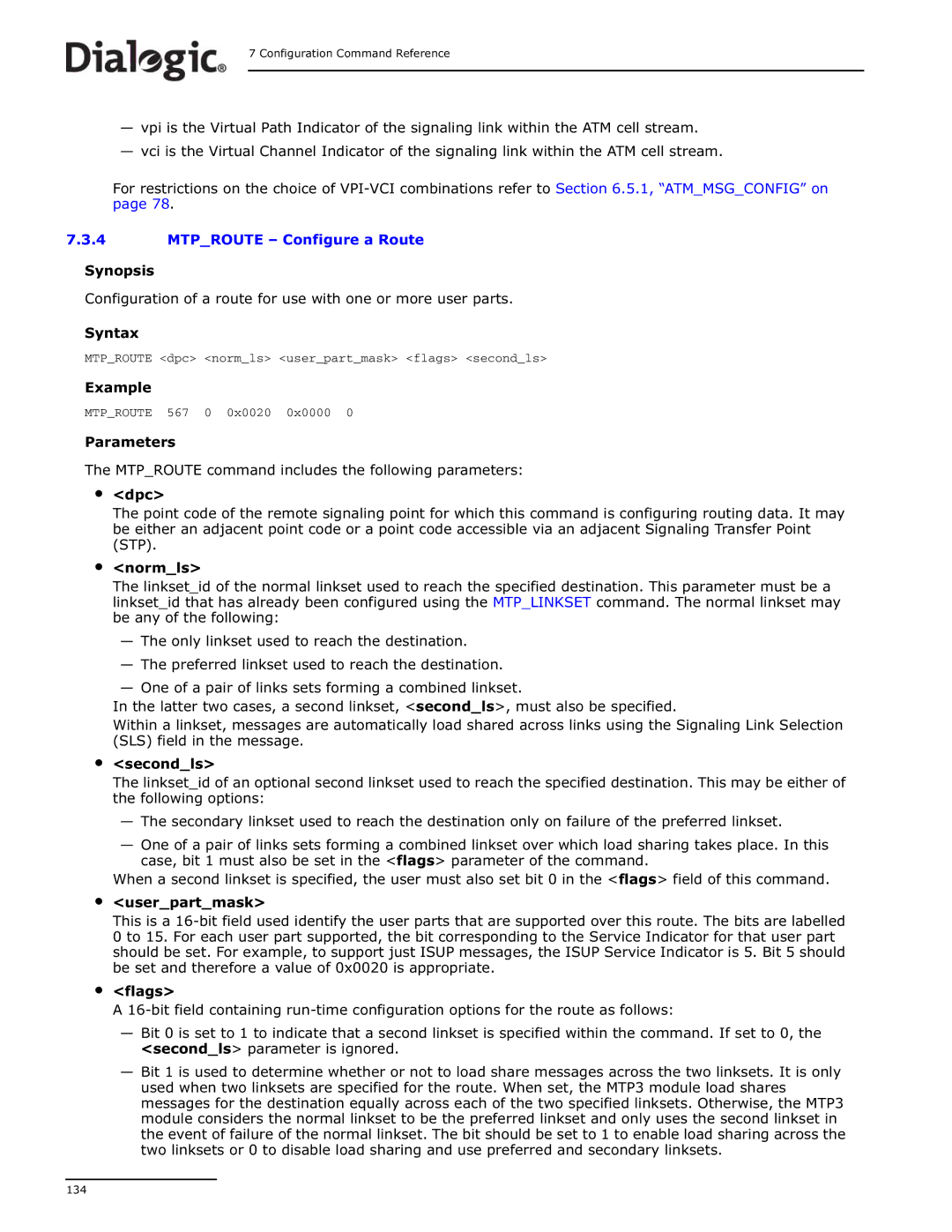
7 Configuration Command Reference
—vpi is the Virtual Path Indicator of the signaling link within the ATM cell stream.
—vci is the Virtual Channel Indicator of the signaling link within the ATM cell stream.
For restrictions on the choice of
7.3.4MTP_ROUTE – Configure a Route
Synopsis
Configuration of a route for use with one or more user parts.
Syntax
MTP_ROUTE <dpc> <norm_ls> <user_part_mask> <flags> <second_ls>
Example
MTP_ROUTE 567 0 0x0020 0x0000 0
Parameters
The MTP_ROUTE command includes the following parameters:
•<dpc>
•
•
•
The point code of the remote signaling point for which this command is configuring routing data. It may be either an adjacent point code or a point code accessible via an adjacent Signaling Transfer Point (STP).
<norm_ls>
The linkset_id of the normal linkset used to reach the specified destination. This parameter must be a linkset_id that has already been configured using the MTP_LINKSET command. The normal linkset may be any of the following:
—The only linkset used to reach the destination.
—The preferred linkset used to reach the destination.
—One of a pair of links sets forming a combined linkset.
In the latter two cases, a second linkset, <second_ls>, must also be specified.
Within a linkset, messages are automatically load shared across links using the Signaling Link Selection (SLS) field in the message.
<second_ls>
The linkset_id of an optional second linkset used to reach the specified destination. This may be either of the following options:
—The secondary linkset used to reach the destination only on failure of the preferred linkset.
—One of a pair of links sets forming a combined linkset over which load sharing takes place. In this case, bit 1 must also be set in the <flags> parameter of the command.
When a second linkset is specified, the user must also set bit 0 in the <flags> field of this command.
<user_part_mask>
This is a
•<flags>
A
—Bit 0 is set to 1 to indicate that a second linkset is specified within the command. If set to 0, the <second_ls> parameter is ignored.
—Bit 1 is used to determine whether or not to load share messages across the two linksets. It is only used when two linksets are specified for the route. When set, the MTP3 module load shares messages for the destination equally across each of the two specified linksets. Otherwise, the MTP3 module considers the normal linkset to be the preferred linkset and only uses the second linkset in the event of failure of the normal linkset. The bit should be set to 1 to enable load sharing across the two linksets or 0 to disable load sharing and use preferred and secondary linksets.
134
